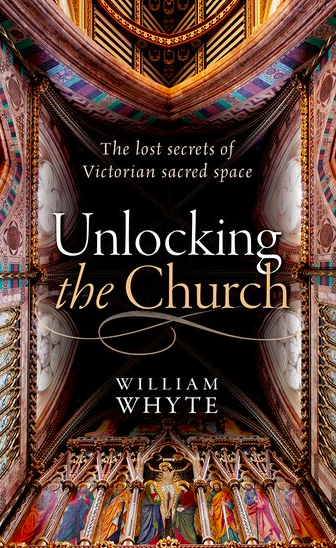Unlocking the Church by William Whyte
Fascinating and meticulously-researched book which charts how church buildings - and how we view them - changed
 Unlocking the Church - the lost secrets of Victorian sacred space
Unlocking the Church - the lost secrets of Victorian sacred space
By William Whyte
Oxford University Press
ISBN: 9780198796152
Reviewed by: Andrew Kleissner
Baptists have not generally been noted for the excellence of their architecture. True, there are the grand chapels of yesteryear, but many of our buildings are functional and plain.
We might say that this doesn’t matter, as we worship God “in Spirit and in truth”. Yet our buildings shape our worship far more than we may imagine. This book contends that the Victorians decisively changed the way in which people regard and use church buildings – a legacy from which we struggle to escape.
At the beginning of the 1800s, claims the author, parish churches were seen as little more than “preaching boxes” in which hearing was far more important than seeing. Box pews offered privacy and comfort, the pulpit occupied a prominent position and the style of architecture was immaterial. Walls were whitewashed and decoration was thought to distract from the contemplation of God.
Half a century later, things were very different. The proper style of church architecture was now said to be Gothic, pointing skywards to heaven. Buildings were often gloomy, intended to evoke a spiritual atmosphere. Every decorative detail had an educational purpose. Flowers and rich furnishings became commonplace. These were buildings, in short, designed to inculcate a sense of the Divine.
Whyte explains this huge change, which took place amidst a torrent of exaggerated polemic. He shows how it was deliberately espoused, not only as part of the ritualistic movement within the Church of England but within an urbanising society influenced by Romanticism and the yearning for an imagined medieval past.
Yet the many new churches which were built during this period were explicitly modern, with good heating and lighting (and pews which were almost deliberately designed to be uncomfortable!) Churches and churchyards, formerly locked except during service times, were now kept permanently open, the hope being that people would come into them and sense God’s presence.
By the end of the 19th century, perceptions of “what a church should be like” had become entrenched – indeed they survive today. Even Nonconformists had caught the Gothic “bug”, often from a desire to be considered as respectable as their Anglican neighbours. And it was not just church buildings which had to look suitably ecclesiastical: new church schools and parsonages also conformed to convention.
The author concludes this fascinating and meticulously-researched book with some observations on our present situation. He exposes the tensions between congregations which often desire to refurbish churches to suit modern needs, and historians who wish to preserve them in perpetuity, quoting a senior cleric who declared that the greatest threats to mission are blocked gutters, bats and the Victorian Society!
However he is not convinced that reordering a church or developing it as a “shared community space” will automatically revive congregations; indeed he feels that many such attempts are misplaced. The book closes with a plea – to my mind unconvincing – to “play the Victorians at their own game” and see how the enduring popular understandings of these buildings can still serve to lead people to God.
Andrew Kleissner is the Minister of Christchurch United Church, Llanedeyrn, Cardiff. One of the churches he has served worshipped in a large Victorian chapel which produced both admiration and frustration.
Baptist Times, 31/01/2018